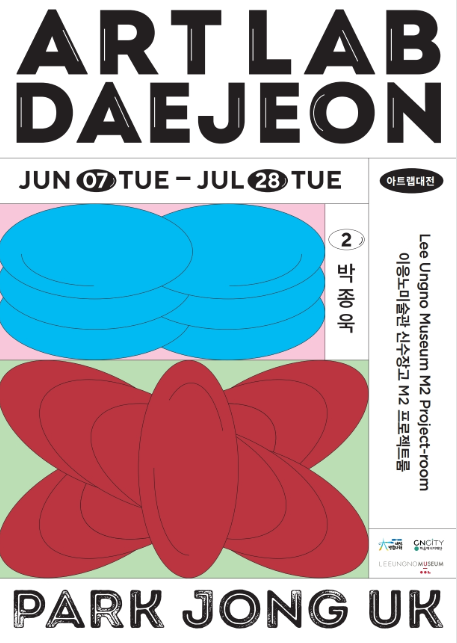
| Period| | 2020.07.07 - 2020.07.28 |
|---|---|
| Operating hours| | 10:00 A.M. - 19:00 P.M. (Every last Wed. til 19:00) Closed on Mon. |
| Space| | Lee Ungno Museum |
| Address| | 157, Dunsan-daero, Seo-gu, Daejeon, Republic of Korea |
| Closed| | Jan. 1st, Korean holidays, Monday. (Closed the following day if Monday is a public holiday |
| Price| | Adults 500 WON Children/ Students 300 WON |
| Phone| | 042-611-9800 |
| Web site| | 홈페이지 바로가기 |
| Artist| |
박종욱
|
정보수정요청



|
|
Exhibition Information
a strange and beautiful world of collection Lee Seul-bi, an art critic Entering the exhibition hall, you will encounter a strange world of collections that would be seen in the secret chambers of the absolute monarchy in Europe in the 17th century. Park Jong-uk began to reflect his hobby of collecting in his work last year. In childhood, he collected meaningful items in his 007 bag and recently stuffed insects. With the exception of some insect specimens, most of them were either human painting and insect specimens combined or through the hands of the author as bird-shaped sculptures. The three-dimensional work <Coral>, which greeted visitors in the hallway, was also directed as one of the rare objects collected by the artist. As the exhibition title 'Con Kammer' says, the exhibition hall itself means a room in which the writer's memory, experience and sense are controlled. The object of the collection is displayed in a rigid cabinet glass frame with hinges fixed to a sharp tool. Butterflies, birds, etc. have wings but cannot fly, and dragonflies sometimes only have their wings separated. In fact, the work begins with a autobiographical experience, in which the author grew up in the oppressive atmosphere and strict control of his father, a former officer-turned-president. However, it is not just a self-sufficient task that reflects individual experiences and tastes. The military culture experienced by the writer is not just a personal experience but a universal mechanism that penetrates the divided Korean society. The authoritarian culture of top-down doubles is still intricately intertwined with the systemic factors of organizational culture in our society. There are no restrictions on the object of collection. All things, experiences, memories, etc. are subject to enthusiastic collection at the moment they are given special meaning. Collecting is a form of realization of the desire to meet the deficiencies in life, and what things will be filled in the cabinet in the future is a very important matter. On the other hand, Park Jong-uk's work is not focused on the object of collection but rather a mock collection that explores the behavior of collection in various ways. In fact, most of the collected insects are images transferred to the OHP film. The most important thing in his work is the role of cabinet frames. The writer says that the cabinet is a space that reflects the joys and sorrows of life. We crave freedom under oppression but ironically there is also a sense of uneasiness that we shouldn't get out of the fence. There is a strange sense of stability that the controlled space gives. As such, the author pays attention to the ambivalent feelings of a human being who dreams of a world outside the cabinet and wants to settle in the frame. If you look at the collected objects, they are in themselves close to a variant, but they have a uniformly strange appearance. The distorted beauty, elegant twisting, experience of death and regeneration, excess and vanitas spirit are embodied in his work. The situation suggests an out-of-control by perfectionist-oriented controllers. It would not be strange if butterflies and birds continued to fly toward the world in hopes of freedom in the future, leaving only stationary tools in the cabinet. Art, as an artist's statement to the world, connects in the contemporary and most avant-garde ways or anachronistic ways. Since several years ago, minimal life has become the number one collection to be disposed of. If you pay a certain amount every month, you can use media content such as music, movies, broadcasting programs and books anytime and anywhere through online streaming services, so your own collection is now meaningless. People don't collect anything they like anymore. And dreams of a Nomad people who can leave lightly. If collectors in the past left immortal collections, modern people transform immortality into experience, not a single concept, and make it an object of immediate consumption. Recently, many people tour hot places or do certain acts and share proof shots making the moment an immortal experience. Come to think of it, the object of collection has only been changed from stamps, insect specimens and music CDs to hearts, likes, and followers on SNS. In a capitalist society, the measure of life's value is capital and people are obsessive about how much money they collect. In that respect, humans must be the animals they collect. The collection instinct is essentially in contact with our existence. Let's go back to the exhibition hall. Unexpectedly, the space is half full and half empty. If the author wanted to reveal his obsessive compulsion to collect, he would have plastered the walls or ceiling of the exhibition hall with collections. The empty wall may imply an unknown territory to be conquered one day, but rather the emptied margin itself eloquently speaks of emptiness. What makes a collection worthwhile is not 'useful' but 'meaning'. The act of collecting, which makes its uselessness meaningful, ultimately proves 'I'. But is it really who I want to be? Perhaps he is chasing the illusion that disappears if others don't recognize him. The quest for modern man's anguish may be an endless challenge. [Source] leeungnomuseum homepage
